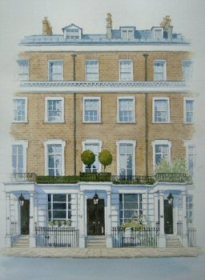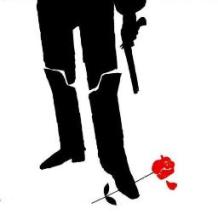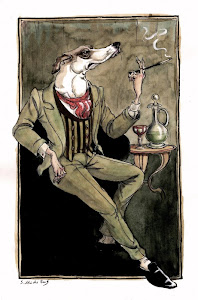"In fact trousers...had primitive origins. They were the mark of the French peasants and workmen, the sans-culottes, who did not wear elaborate breeches or culottes, of fine wool, silk or satin, but what were later called dungarees or overalls. In the early 1790s, members of the Assemblée nationale adopted them. The fashion spread across the Channel when the advanced Whigs, led by Charles James Fox, adopted trousers. At this point the tailor stepped in, turning the rustic garment into elegant attire by making it of superfine cloth, shaping it to the leg, adding pockets, and putting an elastic band under the instep--a device which delighted smart cavalry regiments and, according to George Orwell in 1947, 'gave you a feeling like nothing else on earth'. Beau Brummell was both architect and beneficiary of the 'smart trousers', which made male legs so alluring in ladies' eyes that Pope Pius VII condemned them as sinful, and the garment was taboo in Rome until 1827. But everywhere else it flourished mightily."
'The power of a pocket,' Paul Johnson, The Spectator, 4 June 2011
26 June 2011
Subscribe to:
Post Comments (Atom)





















2 comments:
hum, interesting.
Mon Amiral,
A very imaginative etymological explanation for "sans-culottes".
In fact, the term was used by gentlemen/aristocrats to belittle the masses who did not (could not even afford to) wear underpants.
Post a Comment